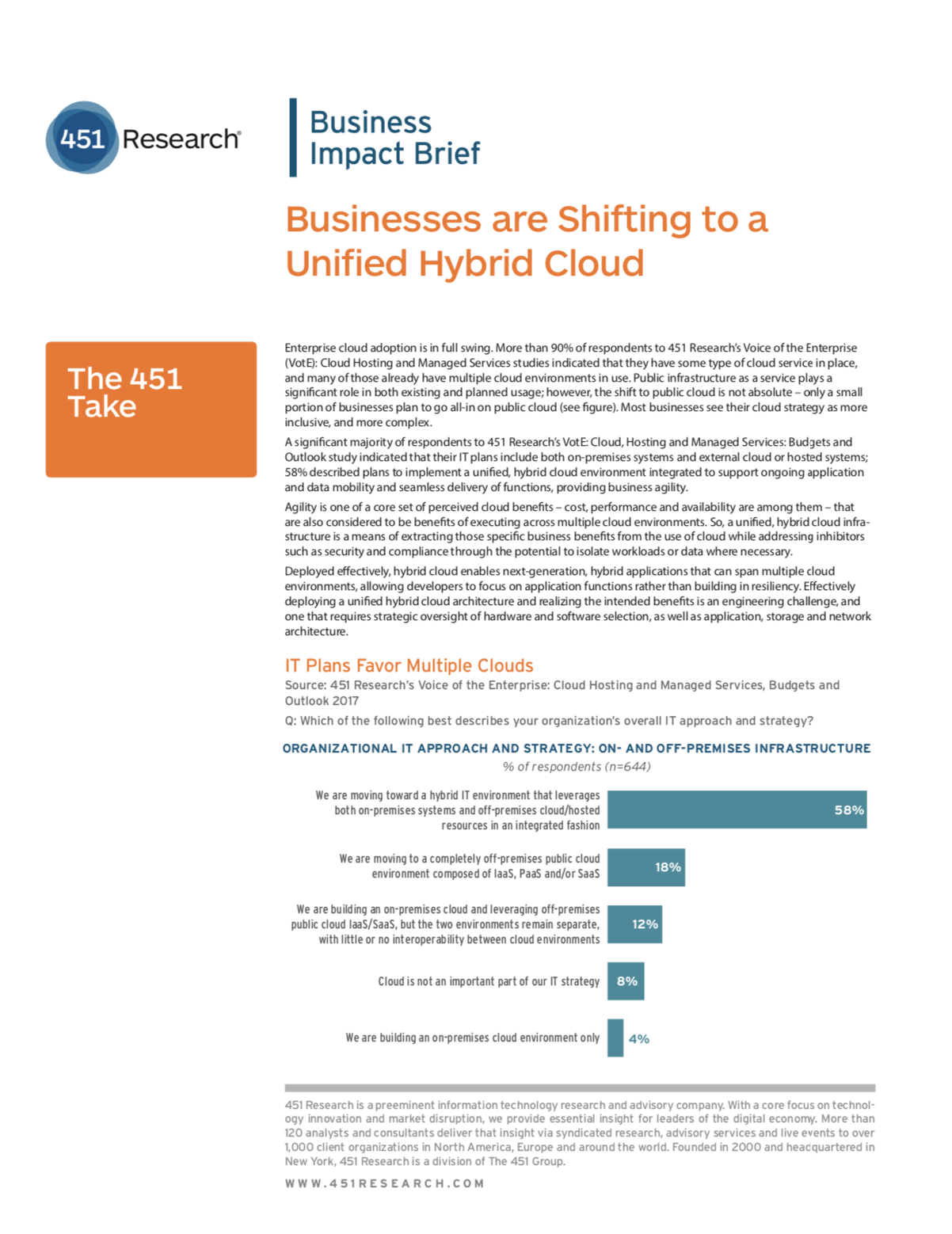Businesses are Shifting to a Unified Hybrid Cloud
Enterprise cloud adoption is in full swing. More than 90% of respondents to 451 Research’s Voice of the Enterprise (VotE): Cloud Hosting and Managed Services studies indicated that they have some type of cloud service in place, and many of those already have multiple cloud environments in use. Public infrastructure as a service plays a significant role in both existing and planned usage; however, the shift to public cloud is not absolute – only a small portion of businesses plan to go all-in on public cloud (see figure). Most businesses see their cloud strategy as more inclusive, and more complex.
A significant majority of respondents to 451 Research’s VotE: Cloud, Hosting and Managed Services: Budgets and Outlook study indicated that their IT plans include both on-premises systems and external cloud or hosted systems; 58% described plans to implement a unified, hybrid cloud environment integrated to support ongoing application and data mobility and seamless delivery of functions, providing business agility.
Agility is one of a core set of perceived cloud benefits – cost, performance and availability are among them – that are also considered to be benefits of executing across multiple cloud environments. So, a unified, hybrid cloud infra- structure is a means of extracting those specific business benefits from the use of cloud while addressing inhibitors such as security and compliance through the potential to isolate workloads or data where necessary.
Deployed effectively, hybrid cloud enables next-generation, hybrid applications that can span multiple cloud environments, allowing developers to focus on application functions rather than building in resiliency. Effectively deploying a unified hybrid cloud architecture and realizing the intended benefits is an engineering challenge, and one that requires strategic oversight of hardware and software selection, as well as application, storage and network architecture.

